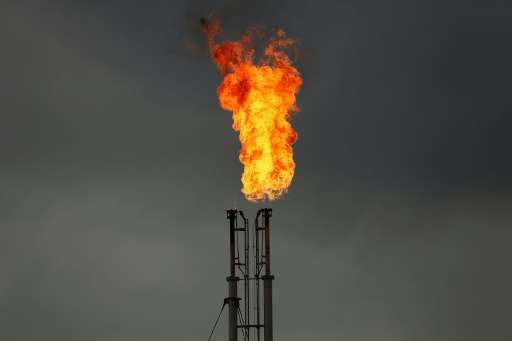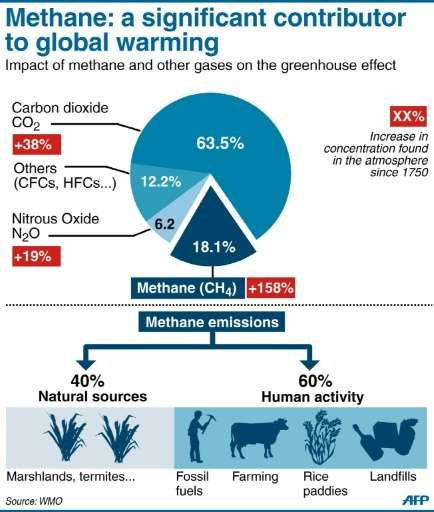Methane is a key component of natural gas and is 25 times stronger than carbon dioxide when it comes to trapping heat in the atmosphere.
US authorities on Tuesday proposed the first-ever federal regulations to cut the potent greenhouse gas methane by limiting emissions from the oil and gas industry.
The four-part proposal by the Environmental Protection Agency is part of President Barack Obama's Climate Action Plan, aimed at reducing pollution that is hastening human-caused climate change.
However, the suggested changes will not, on their own, get the United States to its goal of cutting methane emissions from the oil and gas sector by 40 to 45 percent from 2012 levels by 2025, officials said.
"We do project that our proposal will achieve significant reductions to benefit the climate and public health on the way to meeting that goal," Janet McCabe, EPA acting assistant administrator for the Office of Air and Radiation, told reporters on a conference call.
She declined to specify how much the proposed changes would contribute to the administration's goal.
Methane is a key component of natural gas and is 25 times stronger than carbon dioxide when it comes to trapping heat in the atmosphere.
The four key parts of the EPA proposal include:
- Finding and repairing methane leaks, known as fugitive emissions. Incentives are included for the oil and gas industry to minimize leaks, McCabe said.
- Capturing natural gas that escapes from the completion of hydraulically fractured oil wells, which can also contain natural gas and therefore methane.
- Limiting emissions from new and modified pneumatic pumps, used at well sites and compressor stations and not covered in 2012 rules.
- Limiting emissions from several types of equipment used in natural gas operations, including compressors and pneumatic controllers, which were not previously covered by the EPA.
The EPA said the proposed standards are "expected to reduce 340,000 to 400,000 short tons of methane in 2025, the equivalent of reducing 7.7 to 9 million metric tons of carbon dioxide."
The White House said methane emissions are down compared to the levels seen in 1990, but are on a path to rise by 25 percent by 2025 if changes are not made
'Red tape'
Earlier this year, the White House announced a series of measures aimed at reducing emissions of methane, saying they accounted for nearly 10 percent of US greenhouse gas emissions in 2012, of which nearly 30 percent came from the production, transmission and distribution of oil and natural gas.
Those measures built on actions several states were already taking to regulate new and modified gas and oil installations.
The EPA's added proposals are open for a 60-day comment period, and may take effect next year.
Industry groups blasted the proposed rules.
"Methane emissions have fallen 38 percent since 2005 even as natural gas production soared by 26 percent. Those reductions were the result of industry innovation and voluntary measures," said Kathleen Sgamma, the Western Energy Alliance's vice president of government and public relations.
"Now EPA wants to glom onto that success by adding costly red tape," she added.
Oil production in the United States is at its highest levels in 30 years, and the country has become the world leader in natural gas production, the White House said.
The White House has said methane emissions are down compared to the levels seen in 1990, but are on a path to rise by 25 percent by 2025 if changes are not made.
© 2015 AFP






















